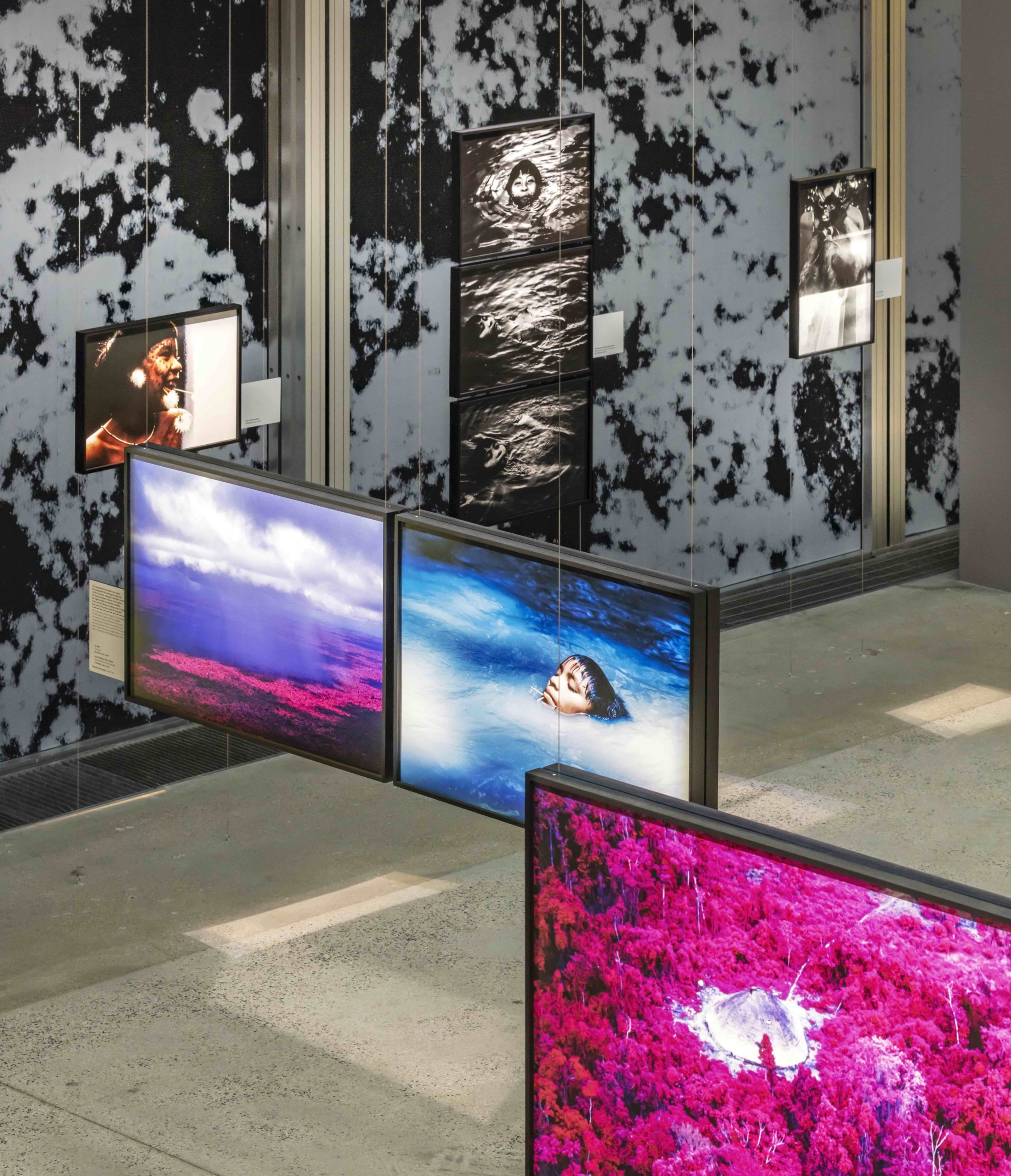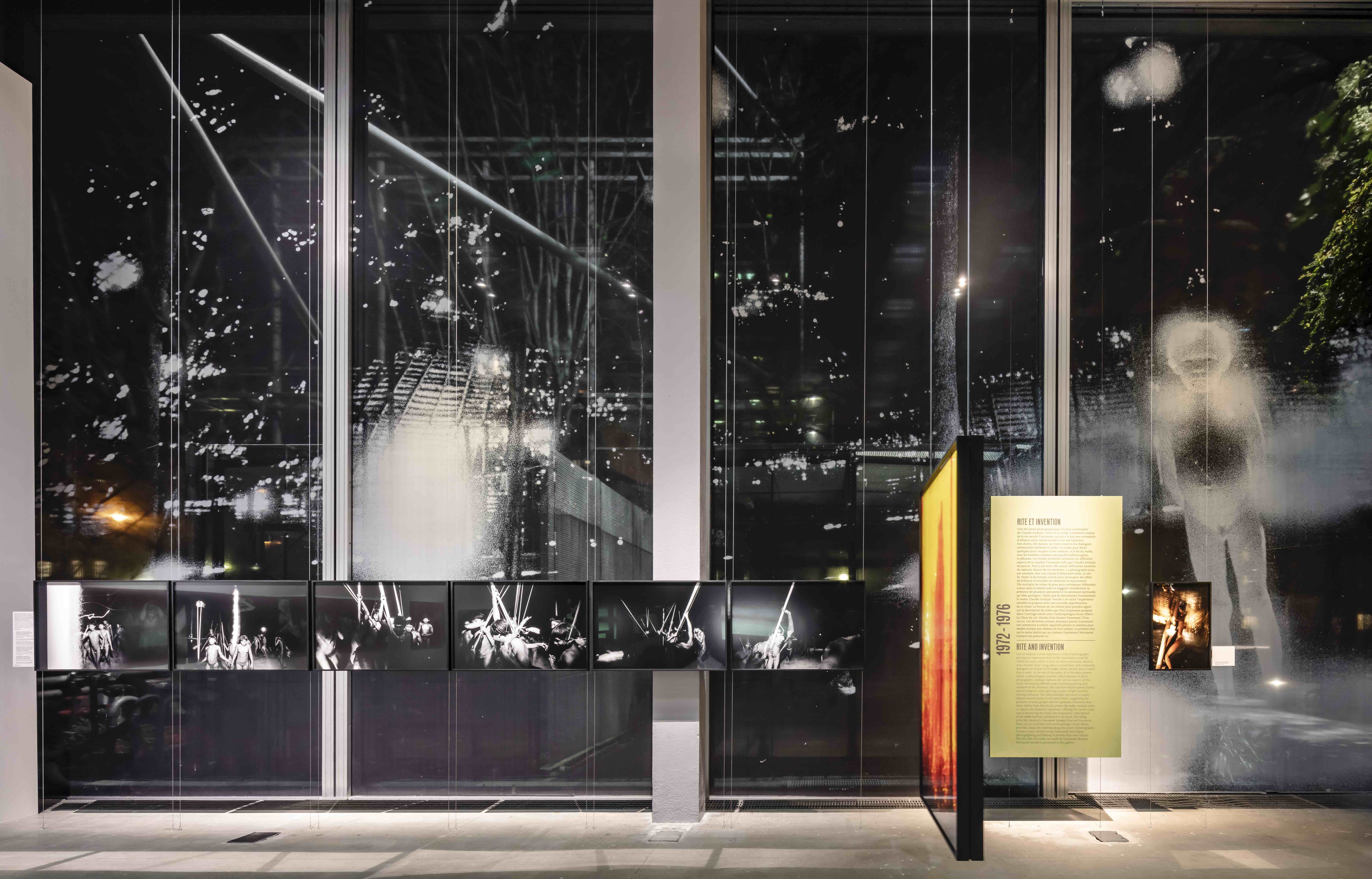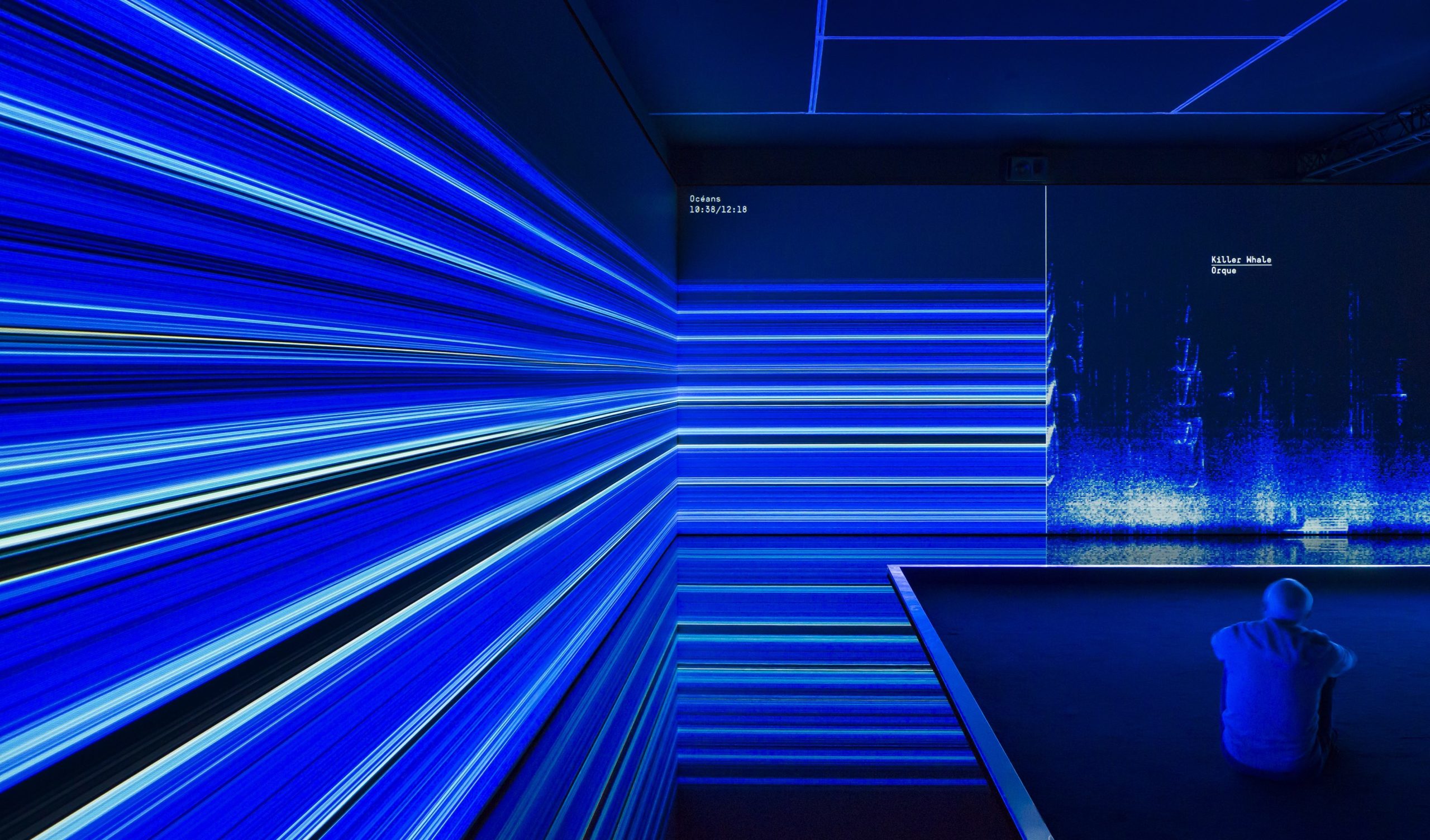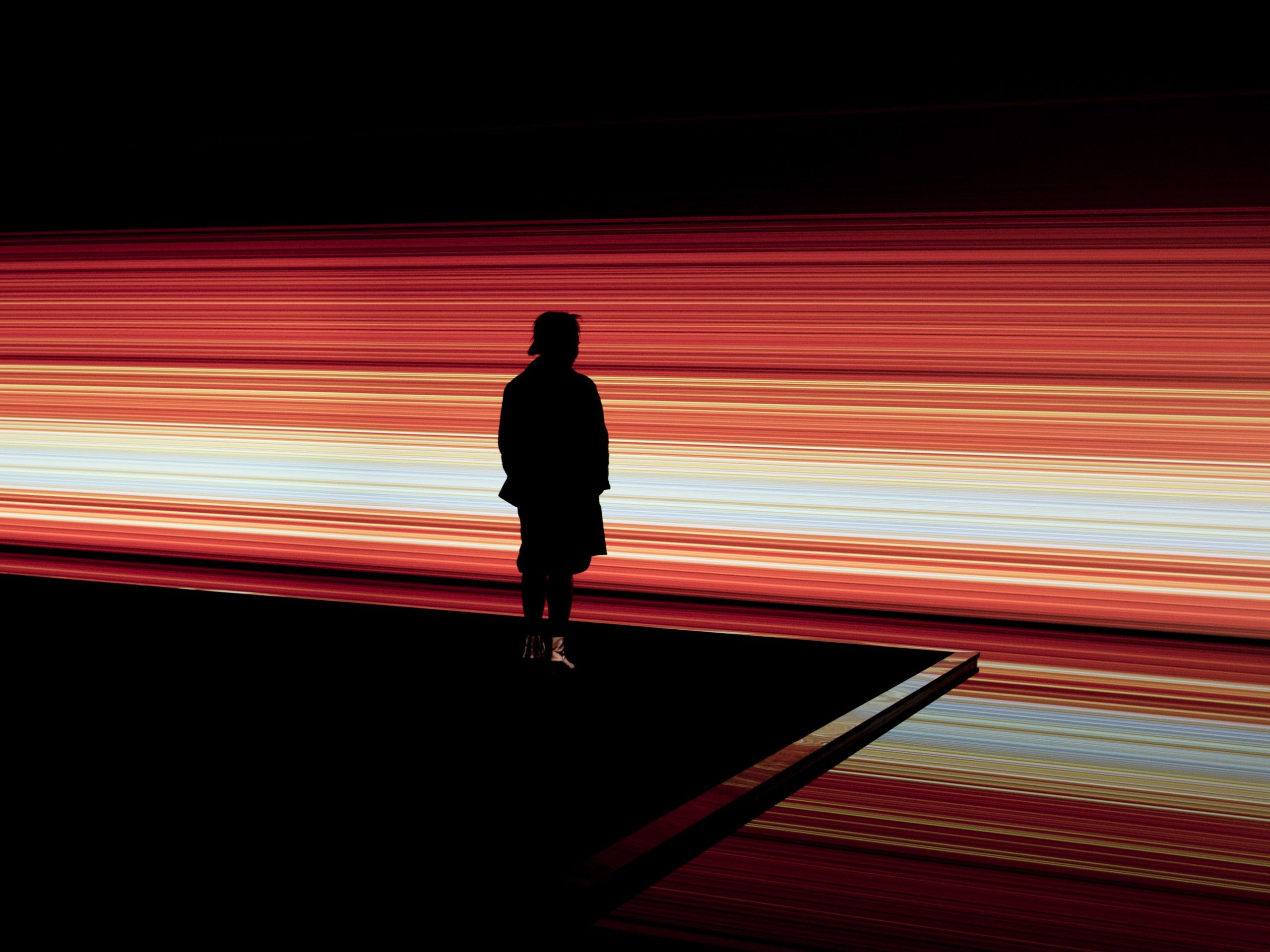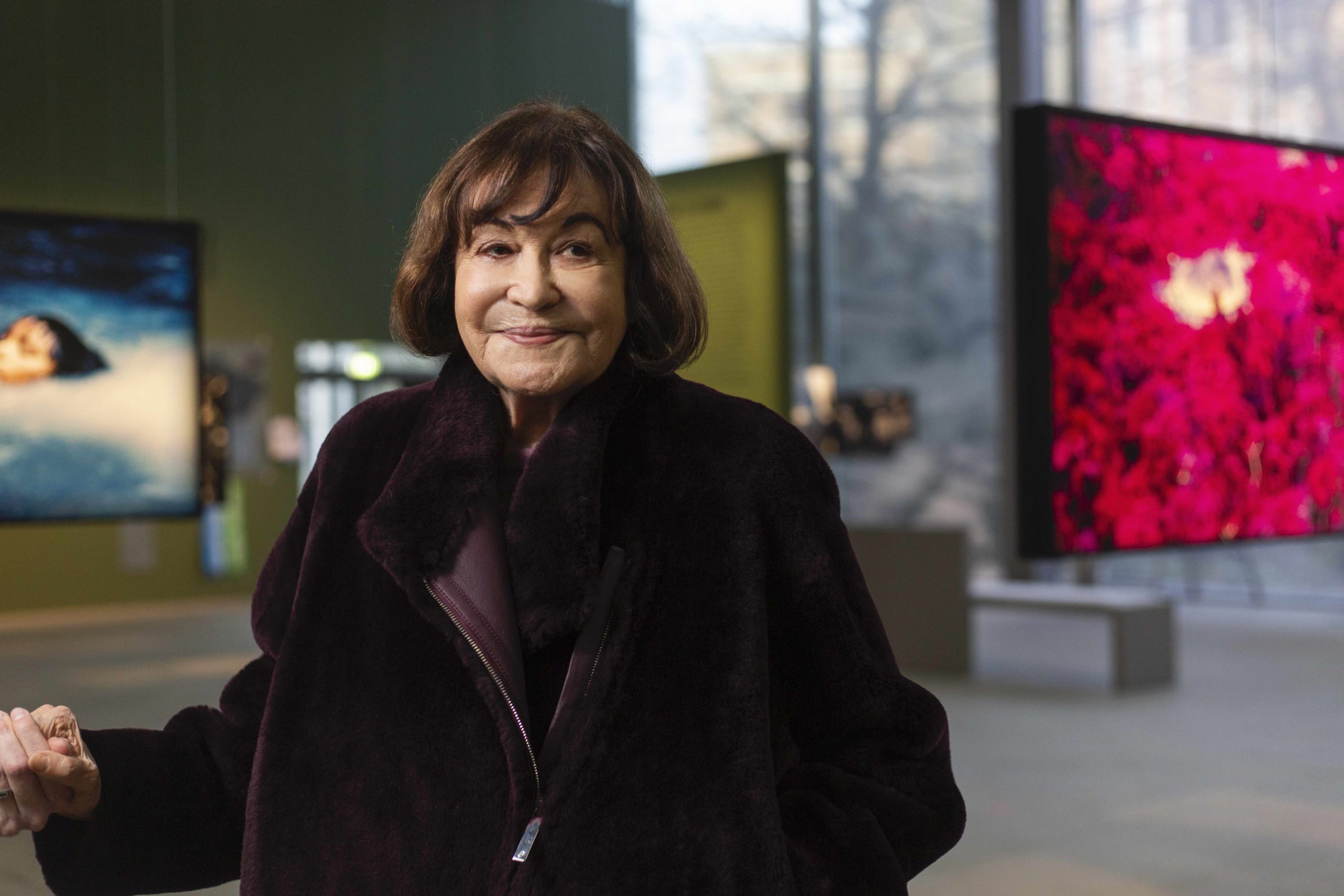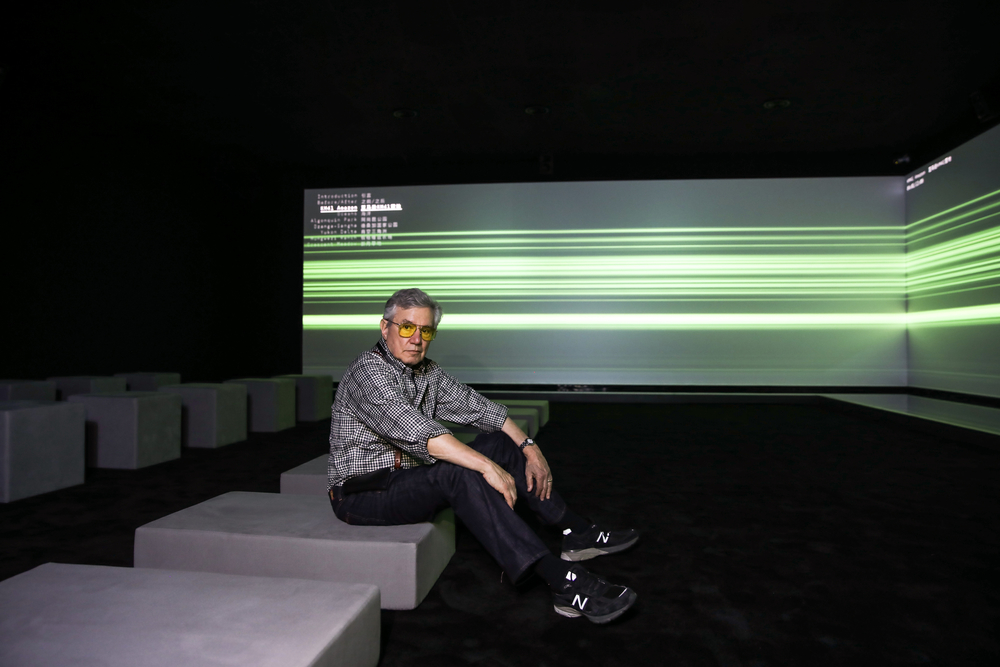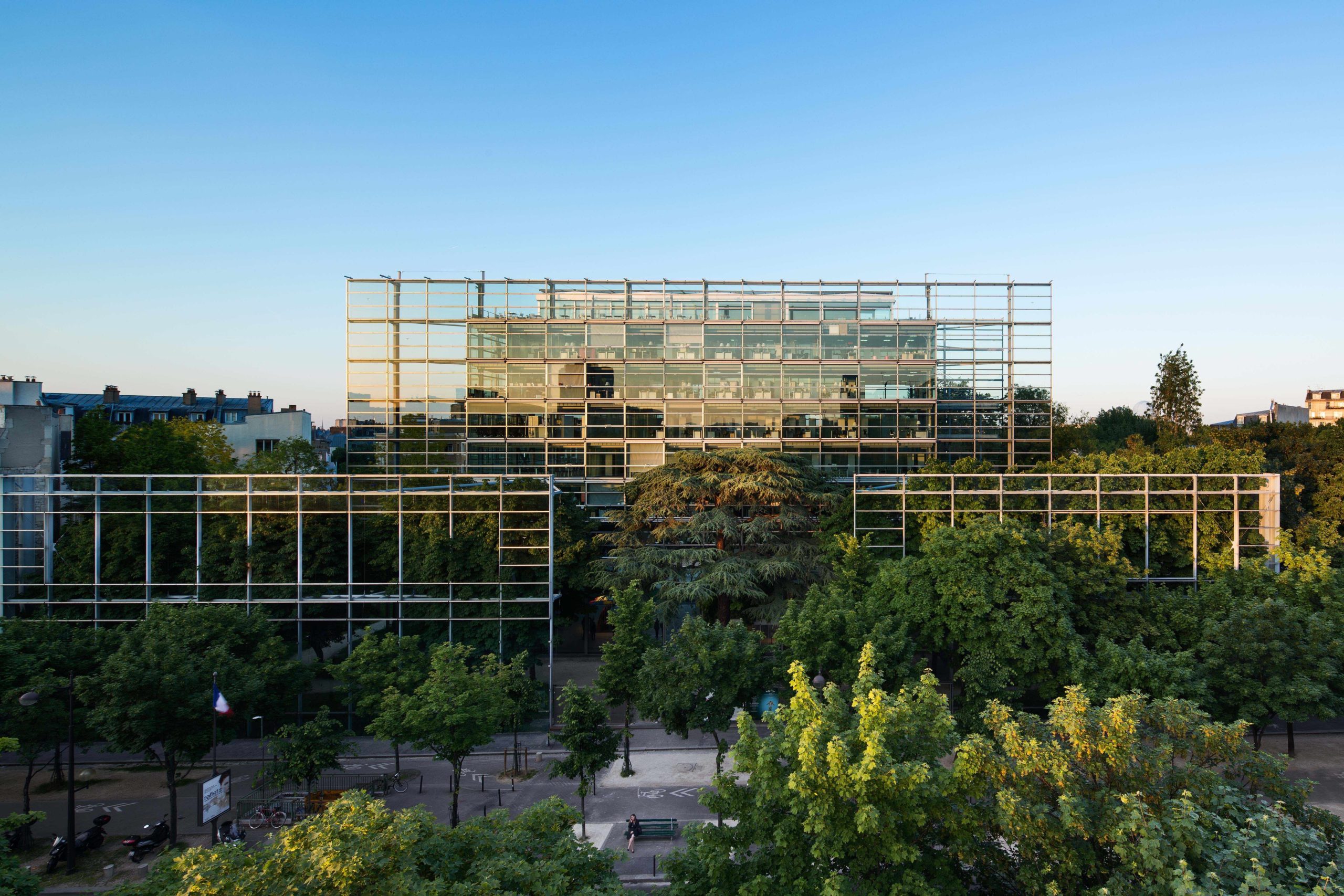How Fondation Cartier Curates During a Pandemic
The Paris museum’s nature-loving aesthetics are an antidote to self-isolation.
The pandemic has been a double-edged sword for the art world. When physically viewing art suddenly became an impossibility, many artists and exhibitors ventured outside the white-cube paradigm—ostensibly finding a captive, under-stimulated audience on which to test drive virtual exhibition tactics. For institutions with collections, one curatorial strategy was to re-exhibit previously shown works that might resonate anew within confinement culture. The collection at Fondation Cartier pour l’art contemporain was naturally set up to do so, thanks to an established history of channeling the natural world in art.
Although its high-fashion namesake evokes rarefied luxury, Fondation Cartier’s interest in nature is just as salient. Following last year’s group show “Trees,” the art museum feted multidisciplinary artist and eco-activist Claudia Andujar with “The Yanomami Struggle,” a 50-year survey of Andujar’s work documenting one of the Amazon’s largest indigenous communities. After its initial February opening, the show relaunched virtually in May, and again in the flesh when the Fondation’s Paris location reopened in June—just as COVID-19 was bearing down on Brazil’s Amazon region.
In addition to Brazil’s indigenous, Cartier has also allowed viewers to commune with at-risk animal and plant kingdoms. In a separate but related virtual project, the museum launched The Great Animal Orchestra, an immersive compilation of bioacoustician Bernie Kraus’s habitat recordings. Besides offering a multi-sensory, back-to-nature escape, the piece typifies the grave importance of immortalizing nature in art: Due to deforestation, many of the animals from Kraus’s orchestra have since vanished. So, even if traveling to the Amazon were feasible, one wouldn’t hear the same soundscape on display in Orchestra.
Below, V speaks with the curator responsible for much of Fondation Cartier’s prescient programming: Hervé Chandès, General Director at the Fondation Cartier pour l’art contemporain.
V What went into launching the Claudia Andujar and the Great Animal Orchestra shows as virtual exhibitions? What about them were conducive to virtual display?
Hervé Chandès The Fondation Cartier curates exhibitions and events by combining scientific methods and artistic sensitivities [in order to] give voice to artists, philosophers and scientists who enrich our vision of the contemporary world. During the global pandemic, it felt more important than ever to share these exhibitions with the public—to offer an “escape” through themes linked to nature.
After exhibition spaces closed in March, we decided to share several special projects online. Bernie Krause’s 60-minute soundscape of the Amazon forest was specifically developed and launched on our online platforms during the pandemic. Its contents, recorded many years ago, convey messages which take on a new dimension today. We also shared new content by Claudia Andujar around the Yanomami culture and her commitment to defending their rights. These [projects] found renewed relevance in the context of the pandemic, which is currently spreading throughout the Amazonian rainforest.
V When did you first start planning these exhibitions, and/or their virtual iterations?
HC In 2014, I discovered the book The Great Animal Orchestra by Bernie Krause, and I was fascinated by his work. Two years later, the Fondation Cartier opened an exhibition of the same name, inviting artists to question the place of the animal in the world. Created by Bernie Krause and United Visual Artists, The Great Animal Orchestra—now a part of the Fondation Cartier’s permanent collection—is an unprecedented, immersive installation that offers an audio and visual meditation on the necessity of preserving the beauty of the natural world and its biodiversity.
Since 2016, the installation has traveled to several international institutions, including the Triennale di Milano, Power Station of Art in Shanghai and The Strand in London. We created a dedicated online project at the time of the 2014 exhibition, and we recently brought that content to Instagram during the pandemic. As the world has been in quarantine, The Great Animal Orchestra provided a perfect, dreamy escape from home, all while raising awareness on the important topic of ecology.
We have been exhibiting Claudia’s photography [since] 2003. The current exhibition, curated by Thyago Nogueira from the Instituto Moreira Salles in São Paulo, shines a light on Claudia’s commitment to the Yanomami people and their home, the Amazon forest. It is her first major solo show in France and will now run through September 13, 2020.
Several photographs are exclusive to our dedicated Claudia Andujar site. Digital projects serve as an extension of a more traditional exhibition, offering new content and reaching a larger audience. Even after an exhibition closes, they continue to live on, and touch new lives, online.
V What can you tell us about forthcoming programming at Fondation Cartier?
HC Sarah Sze was first exhibited at the Fondation Cartier twenty years ago—it was her first major solo show. For her exhibition this October, she will create an immersive installation that transforms the iconic building [that houses the] Fondation, designed by Jean Nouvel.
Alongside this show, we will present the last film by the iconic Armenian director, Artavazd Pelechian. Commissioned by the Fondation Cartier, Nature is a powerful film magnified by a sumptuous soundtrack of classical music and the sounds of nature. This exhibition continues the Fondation’s commitment to contemporary issues, including the environment and the exploration of the living world.
As for next year, the Fondation will present Damien Hirst’s first solo show in France. In his most recent monumental series of paintings, cherry blossom trees are reinterpreted with playful irony. “Cherry Blossoms” will illuminate the Fondation’s glass galleries in Spring 2021.
